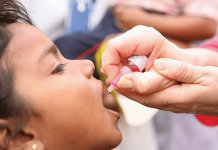ISLAMABAD: Mombasa will turn to be a major future fodder in Pakistan, WealthPK reported on Tuesday.
Fodder crops are the main source of animal food. In Pakistan, two periods (November-January and May-June) are called the fodder scarcity periods when the traditional crop yields drop drastically due to severe weather conditions.
To overcome this problem, few imported fodder crops have been introduced in Pakistan, which give better yields throughout the whole year. Mombasa grass is one of them.
Mombasa is an African-origin variety and Pakistan has imported its seed. It is well-resistant to frost and can even grow in winter through frost prevention techniques.
Mombasa is also disease and pest-resistant, while comparatively other traditional fodder crops are vulnerable to such attacks. Its crop is ready for arrestation after 40 to 45 days and animals like such foliage cropped at an early stage, WealthPK reported.
As it is a perennial one, it goes on for at least 10 to 15 years. Another positive point of this fodder is that it contains zero levels of Erucic acid (which is toxic for animals and mostly found in almost all types of fodder crops when their plants are young) and is best for use when it gains a height of at least 3 to 4 or 5 feet.
Mombasa is a well-palatable fodder for all animals like cows, goats, horses, etc. It is tall, well-productive and leafy well suitable to cut and carry, producing 20 to 40 t/ha dry matter per year. Its crude protein level varies in different soils. It can provide protein from 4 to 28% but the normal ratio (of protein) in Pakistan is 12 to 18%.
Fodder crops not only provide food security through ample supply of milk and meat, but also play an important role in poverty alleviation. The livestock sector of Pakistan contributes 11.5% to the national GDP and at least 55% to the agricultural GDP.
During the fiscal year 2020-2021, the gross value addition of livestock was PKR1.5 trillion. Livestock population is increasing at the rate of 4.2% per annum and so are their food requirements.
It can be cultivated in almost all types of loam in Punjab, but it is too successful in the arable areas of Dera Ghazi Khan and Rajanpur.
It is a good crop in sandy loam. In all those areas where millet is successfully cultivated, Mombasa is also successful there. In November, Mombasa produces flowers, but the climatic conditions of Punjab are not much viable for healthy seed, so mostly its hybrid seed is imported from Australia and Spain. Its one-year-old plant produces more than 100 shoots and increases wonderfully year to year.
At present, fodder crops are cultivated at 10.3% of total arable land producing an average of 22.5-hectare ton, which is insufficient to meet even half of the domestic fodder needs. In terms of essential nutrients, it fulfils the need of at least 15-30% only.
More than half of animal feed is produced from fodders and crop residues, and 1/3 from animal grazing in rangelands, wastelands and other naturally grown sources.
In a detailed discussion with Wealth-PK, Senior Scientist at the Ayub Agricultural Research Centre, Faisalabad Muhammad Ashiq said, “Mombasa is a perennial fodder of African origin named after a Kenyan city and three to four years back, it was introduced in Pakistan. It is a cherished fodder for domestic animals due to its flavour.
Owing to the high growth rate, it gives at least 7-8 yields per year and app 3-4 thousand maunds fodder in one year. During the winter season, its growth reduces but produces seeds.’’
He said the agriculture department not only introduced its available production technology, but the recent research consisting of weed control and regular pest scouting.
It is a good sign that during the whole observation process, no disease or pests were found in this fodder crop. Though it is still under observation, it is showing positive signs for further recommendations. – INP




